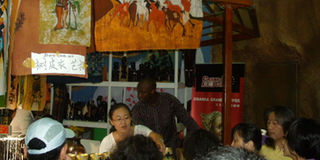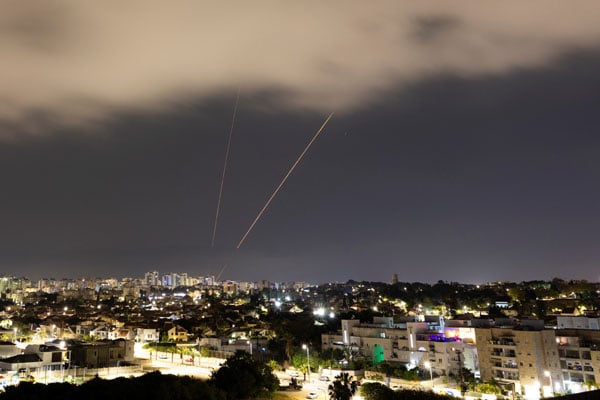Uganda on show at World Expo in the Far East

SELLING COUNTRY: The Uganda stall at the Africa bazaar at the World Expo in Shanghai, China. PHOTO BY EMMANUEL GYEZAHO
Thousands of miles away in Asia, a huge pavilion stands tall to showcase Ugandan culture, identity and tradition at the ongoing World Expo in Shanghai, China.
It is here where a grand gathering of the world’s cultures is taking place at a site befitting its global importance.
Officials from the Uganda Export Promotions Board (UEPB) have built a gazebo to show what Uganda has to offer to the rest of the world. Located on the Nanpu Bridge-Lupu Bridge region in the heart of Shanghai, the Expo covers up to 5.28km of space and easily passes off as a city of its own.
Uganda’s stall is located in the Africa Pavilion where the country’s continental sisters have pitched camp. On the day Daily Monitor visited the Uganda stall, the World Expo had turned 100 days. Attendance by official records had shown that up to 390,000 visitors had walked into the Shanghai gates recording the second busiest day of the month.
The expo site is crowded with national pavilions, shops, sculpture gardens, a sports arena and a performing arts centre which is shaped like a flying saucer.
Dummy doll
As soon as you enter Ugandan territory, you are greeted by a big black dummy, a doll that appears to mesmerise visitors with such sheer force. It is an effigy of the endangered Mountain Gorilla, whose species are only found in Uganda, Rwanda and the DR Congo. There are two bar-like counter tables, one at the main entrance to the Uganda stall, and another at the back, with gorilla dummies parched on the top to welcome visitors. Hundreds of visitors walk in, and touch the hairy dolls, which both have written signs saying: “Hugs from Uganda.”
The guests mainly appear of Asian origin, Chinese nationals perhaps. They carry “Expo Passports” which looks very much like a real passport, with personal information and serial numbers which they use to collect seals or stamps from every country pavilion they visit and take as a special souvenir.
Uganda’s stamp is the image of a gorilla. “We do a lot of stamping,” said Mr Brian Madibo, one of the officials manning the site. “In fact you can even spend the whole day stamping so we now stamp at specific times.”
Banners have been erected explaining key cultural identities of Uganda, like the bark cloth, while some artefacts like the famous Bahiima milk pot ekyanzi, are on show.
A documentary showing landmarks in Uganda runs on a flat screen television on one of the walls, in Chinese apparently, but English subtitles are offered while a portrait of a smiling President Museveni hangs on the wall.
Any Ugandan, who visits the stall, will easily identify with two miniatures that clearly tell this is Ugandan territory; an image of the parliamentary building and Makerere University’s main building.
“The Expo is selling Uganda and I am sure our tourism sector is going to improve,” said Ms Anne Kajara, of the UEPB. In the Africa pavilion, a bazaar is being held where various items from the continent are on sale.
Mr Jamada Kiyemba, a Ugandan from Iganga, is busy selling coffee for his company, Crane Coffee Limited. “This is huge,” he said in reference to the Expo. “We get a lot of Chinese visitors and it is a big opportunity for us to show what Uganda produces.”
However, not all has been rosy for other Ugandans hoping to break new grounds in Shanghai. Mr Joram Musoke, an artist, said he had been let down by visitor’s appreciation of art. “We came here expecting much but it appears the people here don’t appreciate art that much,” he said.




